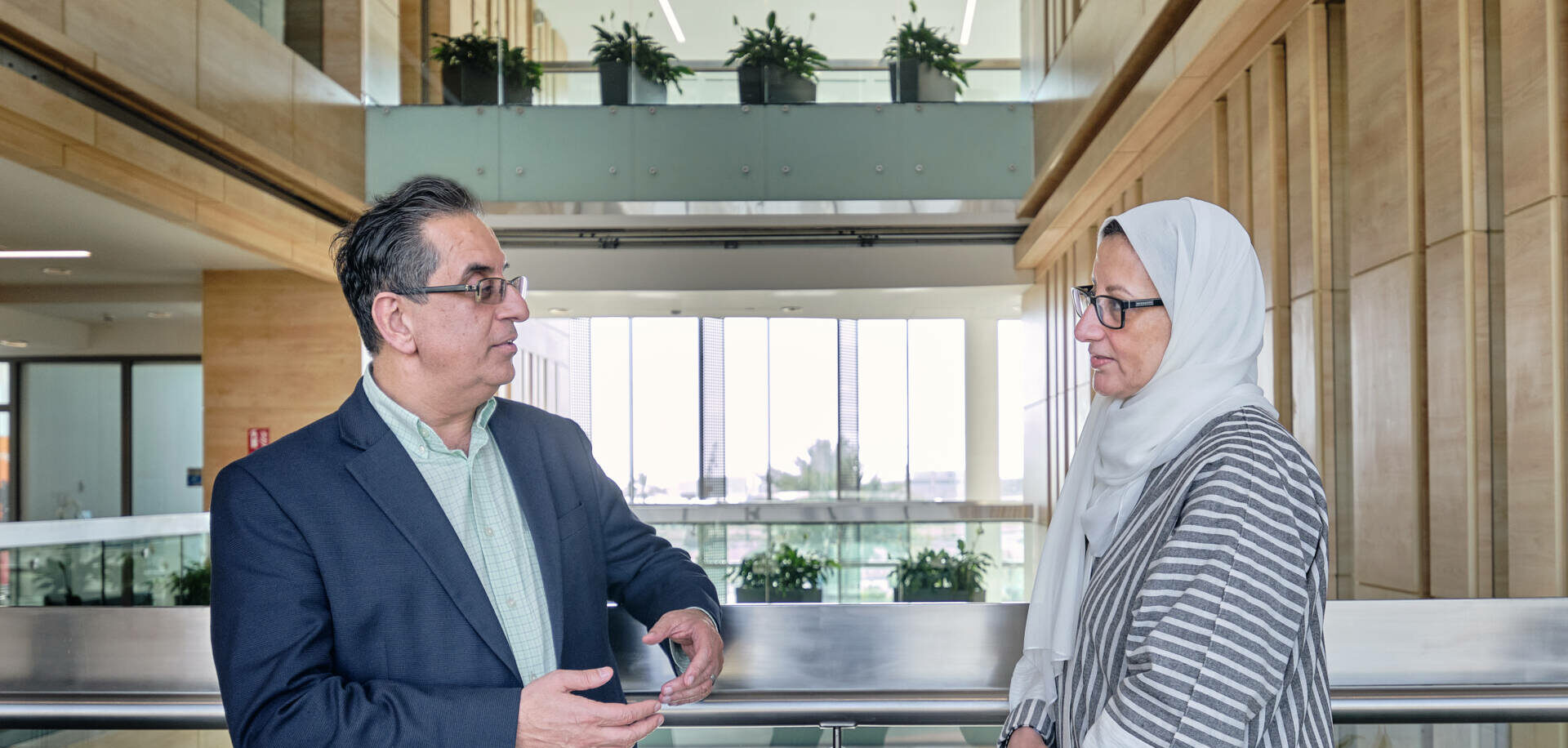When Hala Al-Jawhari of King Abdulaziz University reached out to Husam Alshareef at KAUST more than a decade ago regarding their shared research interests, the professors had no idea of the long and productive research partnership that was to follow.
The pair’s collaboration on thin-film electronic materials and devices began in 2012 when Al-Jawhari took up a visiting professorship position at KAUST. For two years, she commuted from Jeddah to KAUST several times a week. The researchers have been collaborating ever since.
Alshareef and Al-Jawhari’s collaborative research has specifically focused on developing transparent oxide semiconductors for see-though circuitry applications, such as car windscreen head-up displays, smart windows and concealed sensors. “I was impressed by Al-Jawhari’s ‘do-it-yourself’ approach,” Alshareef says. “Soon after starting her visiting professorship, she was growing semiconductor films, fabricating devices in KAUST laboratories and testing devices herself,” he says.
“I was impressed by Al-Jawhari’s ‘do-it-yourself’ approach.”
“I developed a very pleasant and productive collaboration with Alshareef’s group,” Al-Jawhari says. “We have made new discoveries, educated several students, published important papers and ultimately established my laboratory at King Abdulaziz University,” she says.
Early in the collaboration, some of the team’s highest-impact work was to develop a p-type transparent oxide semiconductor with record transistor speed. High performance, power-efficient electronics typically combine p-type and n-type semiconductor materials — but for applications where transparent circuitry is required, only n-type oxide semiconductors were widely available.
“Companies such as Samsung use transparent n-type oxide semiconductors to fabricate high-resolution displays, but developing p-type transparent oxide semiconductors that perform comparably have been challenging,” Alshareef says. The team overcame this limitation by making p-type transparent oxide semiconductors made from tin oxide, a challenging material to work with. “Our innovation opened the door for the fabrication of a variety of transparent electronics,” Alshareef says.
“Our innovation opened the door for the fabrication of a variety of transparent electronics.”
The team was also able to develop alternatives to the most commonly used transparent semiconductor, indium tin oxide. “Indium tin oxide is the material of choice for displays and transparent electronics, but indium is in short supply,” Al-Jawhari explains. “We developed an atomic-layer deposition-based process to create a series of indium-free alternatives,” she says.
Recently, the team developed a new process to successfully grow 2D nanomaterials called MXenes onto semiconductors, such as MoS2, at the wafer scale. The resulting device showed excellent transistor performance.
“Working with the Alshareef group has been one of the best experiences of my career,” Al-Jawhari says. “In addition to the cutting-edge research, the group members have done their best to support me and my group,” she says. “Now I have my own lab at King Abdulaziz University, built with the help of Alshareef’s group.”

